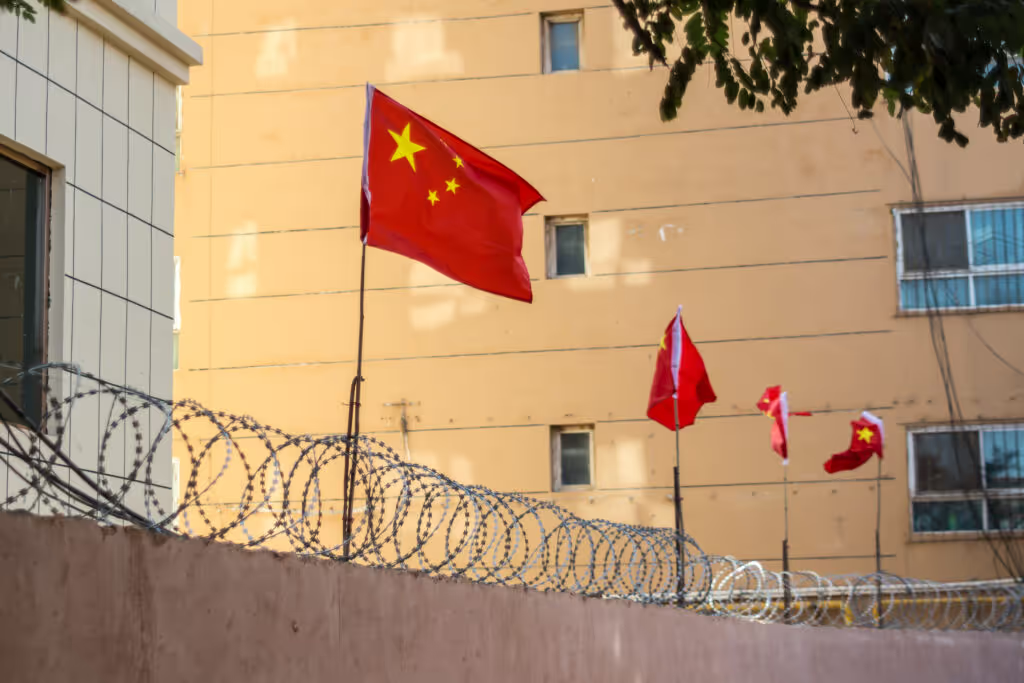U.S. Government Agencies Issue Joint Xinjiang Supply Chain Advisory

On July 1, the U.S. Departments of State, the Treasury, Commerce, and Homeland Security issued a detailed advisory (the “Advisory”). This is in response to the various types of regulatory exposure companies could face when dealing with suppliers and vendors in China’s northwestern Xinjiang region, given substantial allegations of forced labor and other human rights abuses there.
The focus of the Advisory is on what the government identifies as the three key risk factors:
- Assistance in the transfer of surveillance technology to the Chinese government.
- Relying on labor sourced to the Xinjiang region, which may be among other things, forced.
- Aid in the construction of internment facilities for various minorities, such as the Uyghurs and other Muslim minority groups, including the Kazakhs.
The issues cited by the Advisory have various potential applications under U.S. trade law, including sanctions, export controls, and civil or criminal investigations. The U.S. government has taken several actions in response to human rights abuses in Xinjiang, placing a number of Chinese companies and government entities in recent months on the Department of Commerce’s Bureau of Industry & Security (BIS) Entity List.
According to the Advisory, broad swaths of the economy are affected by the issue of forced labor, from mobile phones to cleaning supplies, food processing, and textiles, among many others. The Advisory cites to Executive Order 12818, which builds upon and implements the Global Magnitsky Human Rights Accountability Act, which gives the Secretary of the Treasury, in consultation with the Secretary of State and the Attorney General, the authority to impose economic sanctions on certain persons:
- Who, among other things, are responsible for or complicit in, or have directly or indirectly engaged in serious human rights abuse;
- Who are or have been a leader or official of an entity that has engaged in, or whose members have engaged in, serious human rights abuse relating to the leader or official’s tenure; and
- Who have attempted to engage in serious human rights abuse; or who have materially assisted, sponsored, or provided financial, material or technological support for, or goods or services to or in support of, those persons already sanctioned under E.O. 13818.
The repressive environment in Xinjiang and China presents challenges when conducting human rights due diligence. The Advisory states that conducting third-party audits alone may not be a credible source of information for indicators of labor abuses due to issues they face such as harassment, getting misinformation from Chinese translators, and unreliable interviews of workers due to pervasive surveillance. The Advisory also touches on a number of other compliance-based issues for a broad range of businesses, including financial institutions and warns that U.S. financial institutions may refuse to do business involving Xinjiang, due to U.S. financial institutions being required to adopt a risk-based approach to their anti-money laundering, countering terrorist financing, and countering proliferation financing programs under 18 U.S.C. § 1956(a)-(b) and 18 U.S.C. § 1957, to identify, assess, and mitigate risks to which they are exposed and take measures commensurate with those risks in order to mitigate them effectively.
Key Takeaways
The obvious lesson here is that operating or engaging with entities in the Xinjiang region has certain legal risks for U.S. companies, and they should be aware of the reputational and economic associated with entities engaging in human rights abuses. However, businesses should note two other key points:
- Region-specific risks. In some ways Xinjiang-highlighted risks in the Advisory are similar to geographic compliance risks in other regions, for example in the Middle East (regarding Syria, Iran, Russia) or Latin America (Cuba and Venezuela). You should know the inherent and unique risks of the regions with which you are doing business, and the respective red flags, as well as necessary approaches to prevent violations.
- The drive towards more sophisticated risk-based, detailed compliance programs. Over the years it has been made increasingly clear that compliance programs are not “check the box” exercises. U.S. government enforcement agencies are giving these programs increasing scrutiny to assess their efficacy. The question should always be – does the compliance program respond to the specific risks of this particular business? Laws change, and so do risks. Accordingly, it is appropriate to incorporate measures to protect against evolving risks like those detailed in the Advisory. These changes will help prevent dynamic risks like those related to sourcing and dealing in Xinjiang. Add to this the increasing number of risk advisories issued by agencies like OFAC for various sectors (e.g., Iranian aviation, North Korean shipping practices), and it becomes clearer that periodic evaluation and assessment is critical.
While this Advisory does not reflect a change in the law, the issuance of such an Advisory may be reflective of where U.S. government agencies’ enforcement priorities lie or may be headed

Companies doing business in Xinjiang or with vendors from the region should take note and exercise vigilance, and strongly consider the following:
- Identify key exposure points consistent with the Advisory but specifically relevant to their company – while some risks can impact broad swaths of the economy, some can be more sector and even company-specific. What is your business’ interaction with Xinjiang-sourced goods and technologies and therefore what are your risks, if any?
- Heightened vigilance and expanded, formal due diligence policies and requirements that extend beyond the issues cited in the Advisory in a manner that incorporates a thorough understanding of the particular risks facing the company, and responsive policies that include not only counterparty screening but a deeper understanding of farther degrees up and down the supply chain.
- Periodic monitoring of dynamic risks and assessments. A one-time approach would not be necessarily responsive and as such, risks should be continually assessed and policies revised accordingly.
Further, due to the repressive conditions that make it unlikely for companies to work with local parties to remediate forced and abusive labor practices, business should collaborate with industry groups to share information, develop the capacity to research potential indicators of forced labor or labor abuses, and build relationships with Chinese suppliers and recipients of U.S. goods and services, with the aim of understanding if there are any relationships in or with Xinjiang.
Financial institutions should assess their potential exposure to the risk of handling the proceeds of forced labor on behalf of their clients, and implement a mitigation process line with the risk, as well as assess their illicit finance risk, implement sanctions compliance, anti-money laundering (AML) , Combating the Financing of Terrorism (CFT), and Counter-Proliferation Financing (CPF) and due diligence programs, and provide training and resources to personnel in order to effectively execute those programs.
Taking these proper steps to ensure compliance will help prevent violations and naturally lower the significant costs that could arise from government enforcement actions.
For more information, contact Farhad Alavi at falavi@akrivislaw.com or 202.686.4859. Special thanks to Jaime Rosenberg for her help in this article.

.avif)







